The Journey Inside The Moon: What’s the Moon Made out of
7th Oct 2022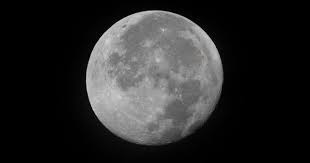
The Moon is the most visible space object in the solar system that can be seen with the naked eye, the Sun excepted. Throughout history, people have wondered about the origin of the Moon and its spots. But only with the development of astronautics were they able to look inside the natural satellite of the Earth and get a complete picture of it. So what is the Moon made of? Also, what robots and missions were involved in getting this knowledge?
How was the Moon formed?
In children’s fairy tales, the Moon is often described as being made of cheese. There is a similarity — in the sky, it looks like a yellow chunk with dark spots resembling cheese holes. But what elements is actually the Moon made of? Most astronomers believe that the Moon is crust from fragments of the ancient planet Theia, which collided with the Earth several million years ago. Earth’s gravity bound this debris, resulting in the formation of our Moon.
However, this is not the only version. In 2017, Israeli researchers proposed a multiple impact scenario as a more natural way to explain the Moon’s formation. The point is that in the early stages of the solar system’s existence, the impacts were very abundant, so it is more likely that the Moon was formed as a result of several collisions rather than one.
If you are interested in a deeper look at this question, we advise you to read “The Big Splat, or How Our Moon Came to be: A Violent Natural History” by Dana Mackenzie. In the meantime, let’s look further into what is the Moon made out of.
What is the Moon’s surface made of?
Early scientists thought the dark spots on the Moon were seas, and they weren’t too far off the mark. In a way, those are seas of the kind, but instead of water, they are filled with solidified lava. Once upon a time, the Moon was subjected to constant bombardment by meteorites that pierced its crust, forming magma spills. Over time, these spills solidified, forming a rocky layer of crust from 38 to 63 miles thick on the surface, dotted with craters and mountains. By the way, the same bombardments also happened on Earth, but the Earth’s atmosphere burned some of the asteroids on the approach, and the traces of those that hit our planet’s surface were hidden by plate tectonics and erosion. But the Moon is deprived of these earthly “gifts,” so its surface has retained most of the collision traces.
What type of rock is the Moon made of? These are predominantly basalt rocks, similar in composition to terrestrial basalt and anorthosite, consisting of silicate minerals — pyroxenes, plagioclases, ilmenite, and olivines. The Moon also has KREEP rocks — compounds of potassium, phosphorus and Rare earth elements.
But how did we get Armstrong’s famous footprint on the Moon if its surface is rocky, you may ask? Thanks to regolith. It is loose lunar soil, covering the entire surface and reaching a thickness of 10 feet in the seas and up to 66 feet in the highlands. So, Is the Moon made of rock and dust? Yes, it is.
In fact, regolith is dusty sand from fragments of igneous rocks, minerals, glass, meteorites, and breccias of shock-explosive origin, cemented by the glass. Due to the high concentration of iron oxide or titanium oxide, it can take on a reddish or blue hue, although an actual visitor of the Moon, Neil Armstrong, claimed that the regolith colour is always coal-grey, no matter how close you look at it.
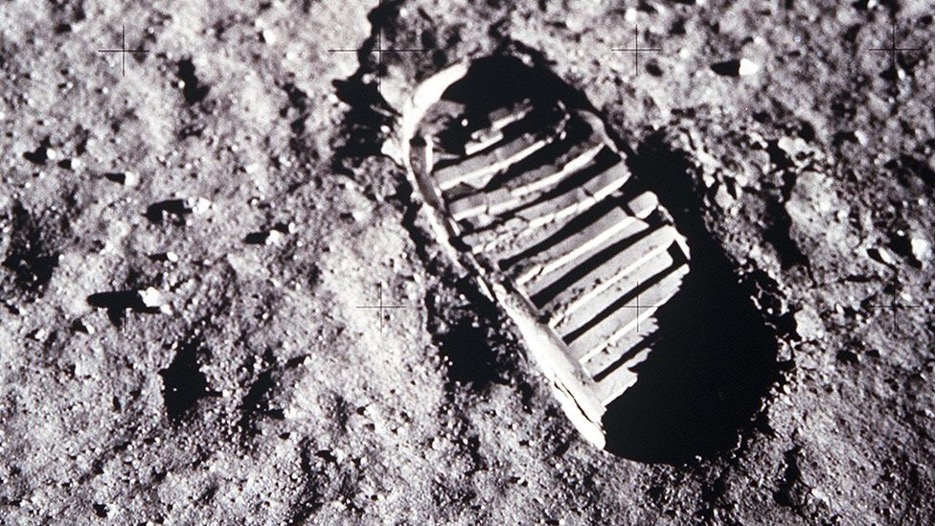
What is the core of the Moon made of?
Now, let’s look inside the Moon. Like the Earth, it also has a mantle and a core, even two cores — a solid inner and a liquid outer. The solid core has a radius of approximately 240 km and is composed primarily of iron, with small amounts of sulfur and other elements. Is the Moon’s solid core hot? More than a little. The inner core’s temperature reaches 1400 degrees Celsius, which is why the outer core is a layer of molten liquid iron with a radius of about 330 km. Behind the outer core begins the mantle, consisting of a transitional lower layer, middle, and upper layer. This structure, as scientists believe, appeared as a result of fractional crystallization from the global ocean of magma. As the magma began to cool, crystals of denser mantle minerals such as olivine and pyroxene sank to the ocean floor, while lighter minerals, especially plagioclase anorthositic feldspar, crystallized and floated to the surface, forming the lunar crust.
That is how the Moon looks inside
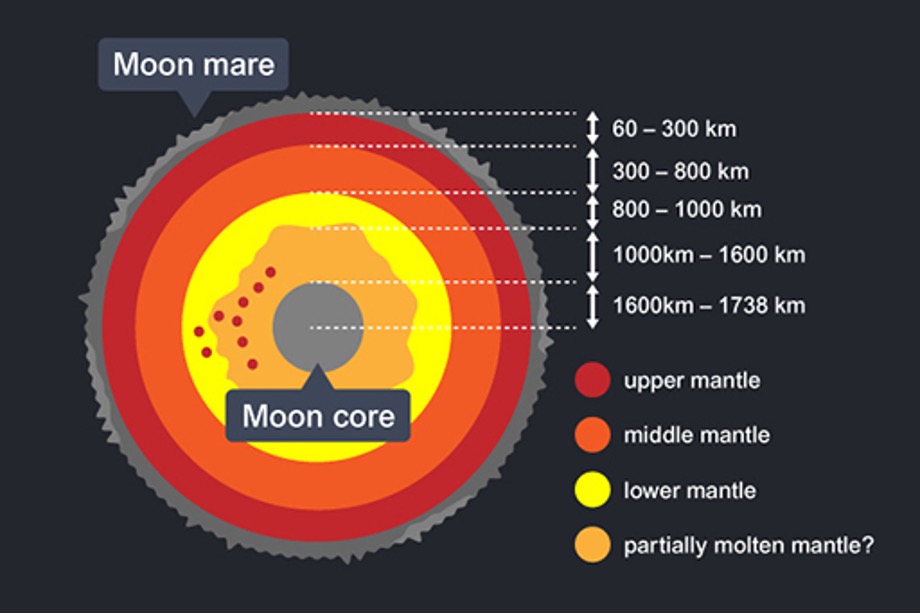
What is the atmosphere of the Moon made of?
So now that we know what material is the Moon made from, let’s find out what its atmosphere consists of. Let’s say right away that compared to the Earth’s air, the atmosphere as such is absent on the Moon. This is an extremely rarefied gaseous shell of hydrogen, helium, argon and neon, millions of times less dense than the Earth’s, with practically no effect on the Moon. Due to the low gravity, gases on the Moon are not retained — they simply fly away into space. For the same reason, the heat from the sun is not retained on the Moon, which makes it very susceptible to temperature fluctuations. So, the temperature on the unlit side can reach up to minus 150 degrees Celsius, and on the sunny side — up to plus 134. So, one cannot walk carefree on the Moon’s surface and considering the sights this satellite offers, it’s unlikely that anyone would fancy such a walk.
And yet, humanity is about to return to the Moon — this time, for long. The NASA Artemis mission is already underway, which means that the first space colonists will appear on the Moon in the coming years. And while we are still waiting for this pivotal moment, let’s turn to the history of Moon exploration and find out which missions helped us discover what is the Moon made of.
Explorers and missions that studied Moon
Scientists have been studying the Moon long before it was possible to send the first automatic missions to it. But the real breakthrough in lunar exploration came with the first Apollo missions. Let’s find out who helped us discover the Moon as it really is.
1609. Galileo Galilei
Italian scientist Galileo Galilei became the first person to look at the Moon through a telescope. With its help, he discovered that the Moon is made up of mountains and mountain ranges and then compiled the world’s first map of the lunar surface based on optical observations.
1753. Ruđer Bošković
Croatian astronomer Ruđer Bošković proved that the Moon has no atmosphere. The conclusion was based on Bošković’s observations showing that when stars are covered by the Moon, they disappear instantly. If the Moon had an atmosphere, the stars would fade away gradually. With this statement, Bošković also refuted Giovanni Riccioli’s theory that the lunar seas were filled with water. The absence of an atmosphere excludes the presence of liquid water on the Moon’s surface since water would instantly evaporate.
1959. Luna 1, 2, 3
The Soviet automatic interplanetary stations, Luna, were the first vehicles to reach the Moon. With the help of Luna-1 and Luna-2, it was possible to obtain data on the gas component of interplanetary matter in the circumlunar space, as well as establish the absence of a noticeable magnetic field of the Moon and radiation belts around it. Luna-3 was the first to photograph the side of the Moon invisible from the Earth. Pictures taken at a distance of 60-70 thousand kilometres from the lunar surface gave the first impressions of this side of the Moon and formed the basis of the first complete map and globe of the Moon.
1966. Luna-9
On 3rd February 1966, the Luna-9 station, for the first time in the history of space exploration, made a soft landing on the surface of the Moon in the Ocean of Storms region and transmitted tele-panoramas of the lunar surface to Earth. Based on the images obtained, the features of the micro-relief of the lunar surface were determined, in particular, the absence of a considerably thick dust layer.
1967-1968. Surveyor 5,6,7
These American automatic devices carried out the first chemical analysis of lunar soil samples, revealing that they contain basalt rocks with lower iron content in the mountain crust and higher content in the lunar sea samples. This marked the beginning of measuring the chemical composition of the lunar soil directly on the satellite’s surface.
1969-1972. Apollo 11, 12, 14, 15, 16, 17
As a result of the first and, so far, the only manned missions to the Moon, twelve astronauts have visited its surface. They conducted a series of studies (measurements of heat flow, magnetic field, radiation level, intensity and composition of the solar wind). Also, They delivered a total of 382 kg of lunar material, consisting of 2200 individual samples of regolith and rock, to Earth. This helped to more accurately determine what is the surface of the Moon made of. Scientists confirmed the presence of iron and found traces of titanium, aluminium, sodium, and sulfur.
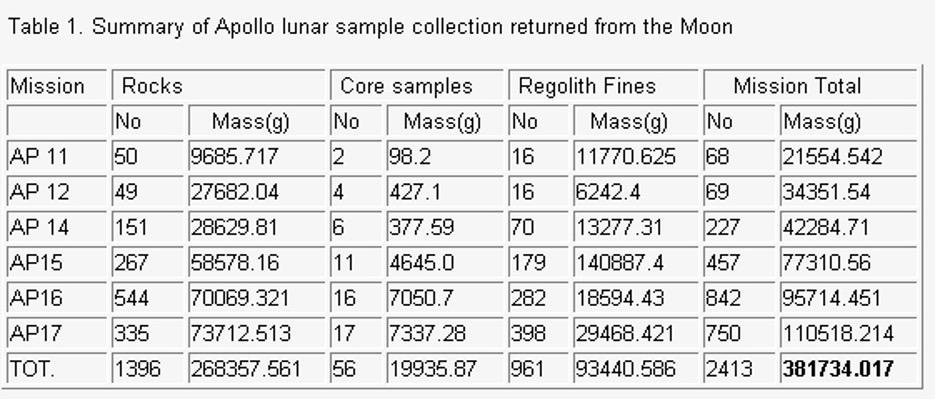
1970. Lunokhod-1
On 17th November 1970, the Soviet Luna-17 station delivered a lunar rover to the surface of the Moon for the first time in history. In 10.5 months, the device travelled a distance of 11 kilometres and transmitted many panoramas, individual photographs of the Moon’s surface, and other scientific information to Earth. The French reflector installed on Lunokhod-1 made it possible to measure the distance to the Moon with an accuracy of several centimetres using a laser beam.
1973. Moon rover Lunokhod-2
In January 1973, AMS Luna-21 delivered the second Soviet self-propelled planetary rover Lunokhod-2 to the Moon for a comprehensive study of the transition zone between the sea and the continental regions. In four months of operation, the device travelled a distance of 37 kilometres, having transmitted 93 telephoto-metric panoramas and about 89 thousand images. During the shooting, stereoscopic images of the most interesting relief features were obtained, allowing a detailed study of their structure.
1994. Moon probe Clementine
NASA’s first probe to map the Moon with laser ranging equipment. In 71 days of work, it took about a million images at eleven different wavelengths and also received valuable scientific information confirming the hypothesis of lunar poles containing iced water.
2003-2006. Smart-1
The first automatic station for lunar exploration from the European Space Agency, SMART (Small Mission for Advanced Research in Technology), was launched on 28th September 2003, and worked for three years. Thanks to the work of this lunar probe, scientists managed to detect the presence of calcium and magnesium on the Moon.
2009. NASA’s orbiter LRO
NASA’s Lunar Reconnaissance Orbiter has been operating in lunar orbit since June 2009 and is still active today. In 2012, the spacecraft helped detect helium atoms in the lunar atmosphere and argon atoms in the lunar soil. In the same year, LRO discovered large ice deposits in Shackleton Crater, overriding conservative estimates of the amount of water in the lunar soil by 5-10 times. In July 2022, the Diviner infrared radiometer on board the station helped discover that a temperature comfortable for human life, about +17 degrees Celsius, is constantly maintained in a cylindrical depression in the Sea of Tranquility about 100 meters deep, in its constantly shaded area.
2013. Lunar rover Yùtù
The first Chinese lunar rover Yùtù (“Jade Hare”), landed in the Rainbow Bay crater on 14th December 2013. It studied the lunar surface for 31 months, exceeding its estimated period of operation more than twice. During this time, the lunar rover completed many complex missions, including taking the first pictures of the geological layers of the Moon and discovering a new type of lunar soil — basalt, which differed in composition from all soil samples obtained during the Apollo and Luna missions. This gave scientists new insight into what is the Moon made of. Israel, India, and Japan also engaged in lunar missions, but they were less successful.
![Not Only Eclipse: Last Week In Best Astrophotos [5-12 April] Not Only Eclipse: Last Week In Best Astrophotos [5-12 April]](https://orbitaltoday.com/wp-content/uploads/2024/04/Veil-Nebula-300x205.jpg)

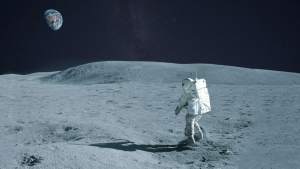

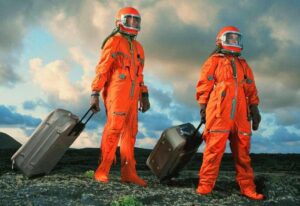
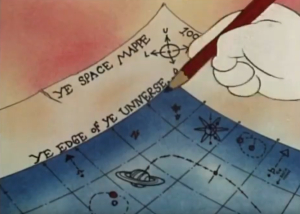
Thank you for your comment! It will be visible on the site after moderation.